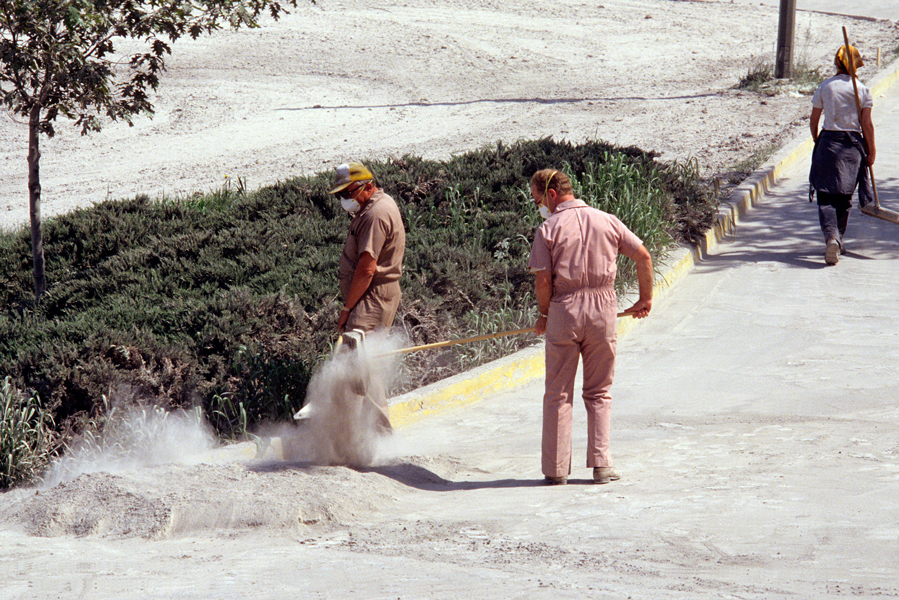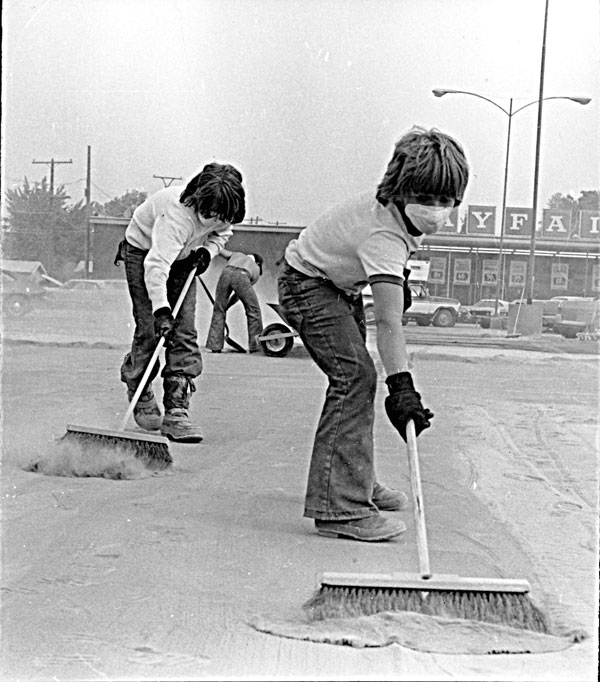by
<a href="mailto:communicationsteam@awcnet.org">Communications</a> | Dec 11, 2023
How the 1980 Mount St. Helens cataclysm serves as a parable of resiliency.
How the 1980 Mount St. Helens cataclysm serves as a parable of resiliency.
By: Allyson Meyer
In the early hours of May 18, 1980, the eruption of Mount St. Helens and the resulting shock wave leveled millions of trees. A deluge of mud—earth and rock mixed with melted ice and snow —scoured the landscape, and 1.4 billion cubic tons of ash fell from the sky like snow. In the cataclysmic eruption, which lasted nine hours, more than 50 people perished and some 200 homes and 27 bridges were swept away—but the ash lingered for days. It coated cars, lawns, roads, and anyone who ventured outside. Across eastern and southern Washington, ash covered entire cities in a dull sheen of sullen gray.

Community members work to clear volcanic ash from the streets of Pullman following the eruption in May 1980.
Credit: David R. Frazier Photolibrary, Inc./Alamy Stock Photo
As is often the case though, out of the devastation emerged stories of resilience and rebirth. Community members came together and formed brigades to shovel and sweep away the coating of ash that blanketed local streetscapes. Neighbors in Yakima had to sweep their lawns free of ash before mowing to reveal green grass beneath.

Young boys helping to clean up after the ash fall, May 1980
Credit: Courtesy Yakima History Museum
And out of the darkness came hope. As researchers journeyed to the ash-shrouded terrain surrounding the mountain, they were greeted by small, green shoots of fireweed. Gophers that had survived the eruption and subsequent devastation were already hard at work burrowing—transforming the soil into a nutrient-rich landscape.
“Ecologists thought they would have to wait years, or even decades, for life to return to the mountain,” author Eric Loudon Wagner writes in After the Blast: The Ecological Recovery of Mount St. Helens. “But when a forest scientist named Jerry Franklin helicoptered into the blast area a couple of weeks after the eruption, he found small plants bursting through the ash and animals skittering over the ground. Stunned, he realized he and his colleagues had been thinking of the volcano in completely the wrong way. Rather than being a dead zone, the mountain was very much alive.… From fireweed to elk, the plants and animals Franklin saw would not just change how ecologists approached the eruption and its landscape, but also prompt them to think in new ways about how life responds in the face of seeming total devastation.”
Today, as local leaders forge a way forward through the many, sometimes seemingly insurmountable, challenges that confront cities today—be it recovery from a pandemic or a wildfire, the economic fallout of inflation, or the intensifying impacts of a warming planet—the eruption of Mount St. Helens is a parable of resiliency. Because the world that emerged from the ashes seemed stronger, and more vibrant, than what was there before.